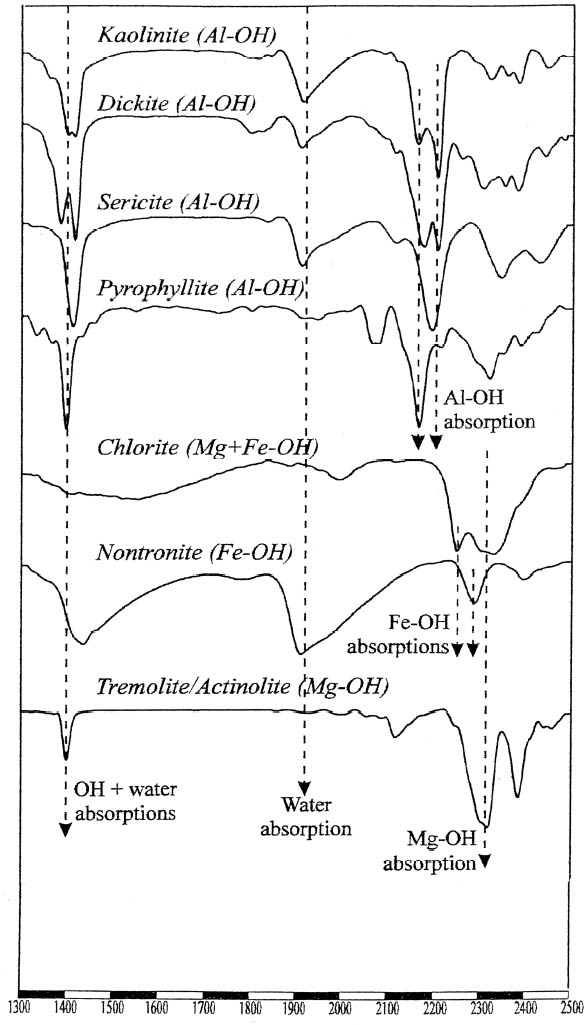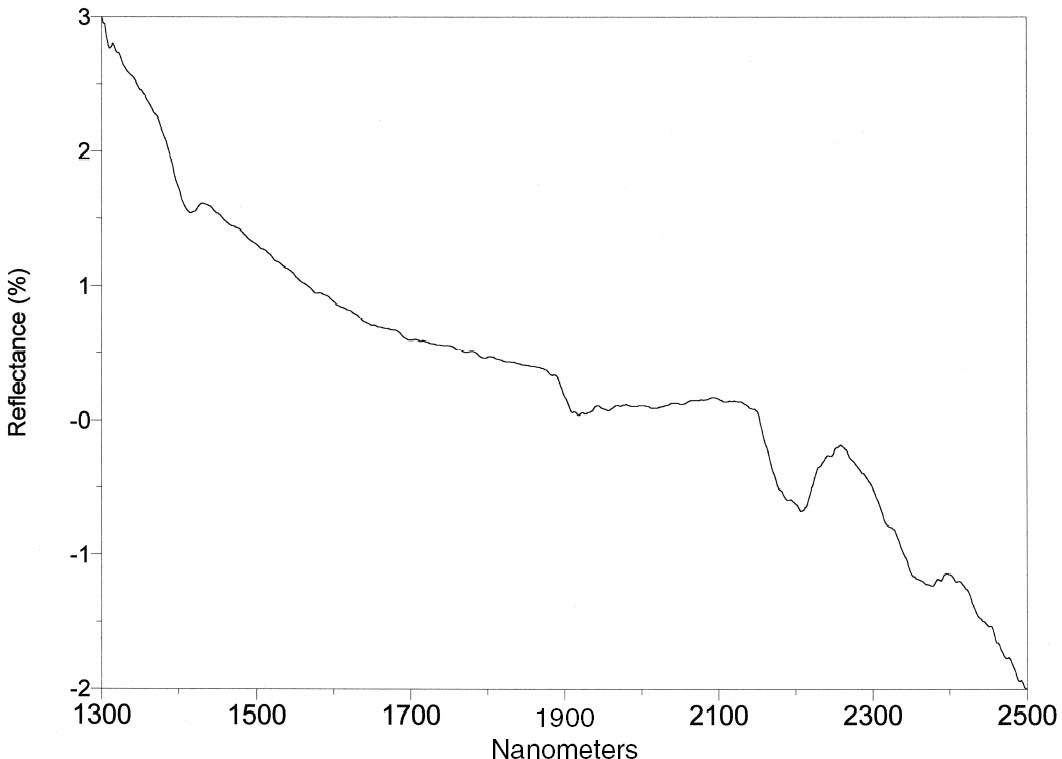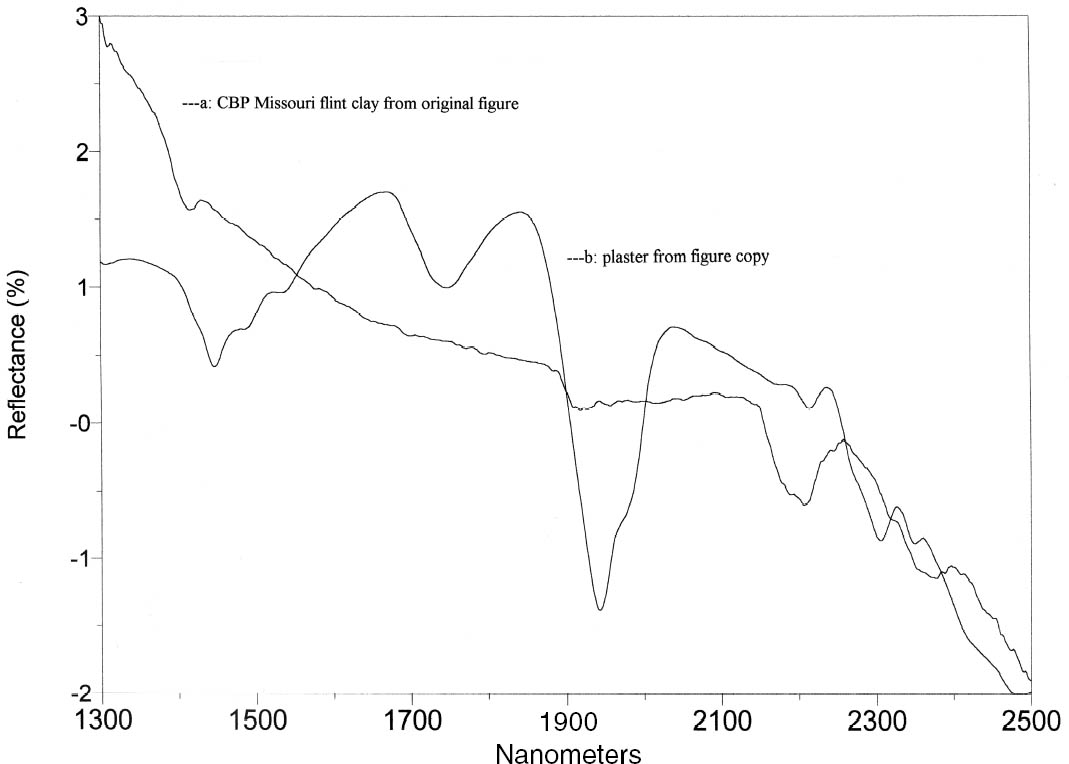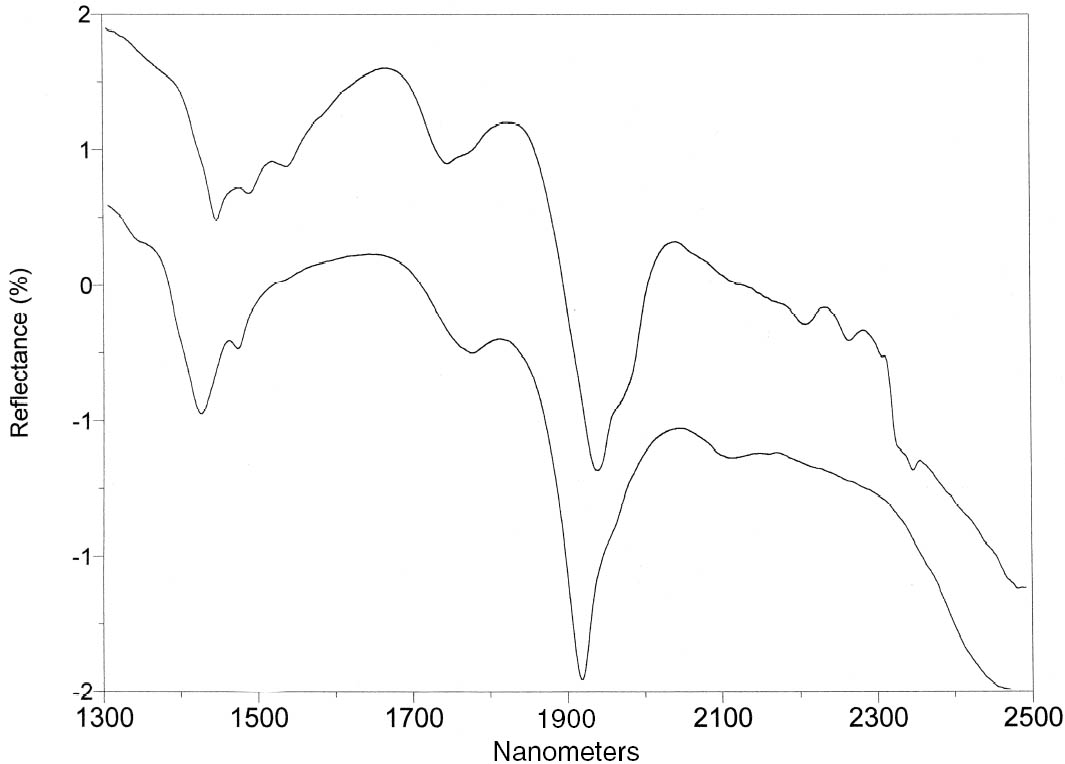USING A PORTABLE SPECTROMETER TO SOURCE ARCHAEOLOGICAL MATERIALS AND TO DETECT RESTORATIONS IN MUSEUM OBJECTSSARAH U. WISSEMAN, THOMAS E. EMERSON, MARY R. HYNES, & RANDALL E. HUGHES
3 CAHOKIA FIGURINESThe large red stone figurines crafted by 12th-century Mississippian peoples at the site of Cahokia, near St. Louis, Missouri, are some of the most spectacular prehistoric works of art in North America. Examples of these figurines and effigy pipes have been found in archaeological sites within an area stretching from Wisconsin to Mississippi and from Oklahoma to Alabama. Representing both mythological and real individuals, they are a rich source for understanding Mississippian symbolism, iconography, and lifestyles (Emerson 1989). As a result of our archaeometric research, we were able to demonstrate that all these artifacts were created from Missouri flint clay quarries adjacent to St. Louis (Emerson and Hughes 2000; Emerson et al. 2003). Consequently, they represent a singular glimpse of Cahokia's inhabitants. As part of our sourcing project, we traveled across the eastern United States examining and analyzing Cahokia figurines in many museums. It was during the process of conducting PIMA analyses that the utility of the instrument in identifying areas of restoration became apparent. It happened quite by accident when we were conducting tests on two Cahokia figurines that have been curated since the 1930s. A number of large figurines had been excavated, but as is often the case, the accession records were not clear concerning which specimens had been retained and which had been transferred to other institutions. Since the specimens had been skillfully restored, it was not readily apparent which effigies were original and which were copies. Destructive analysis of the pieces was not possible because of their archaeological and artistic value and because of their importance to the Caddo and Wichita nations, who claimed the specimens under the provisions of the federal Native American Graves Protection and Repatriation Act (NAGPRA).
The PIMA analysis of the objects was enlightening and definitive. The authentic effigy produced the distinctive PIMA spectra of Missouri flint clay (fig. 3). PIMA spectra of the figurine identified the distinctive combination of chlorite with a 7�/14� mixed-layering, abundant boehmite and heavy-metal phosphate mineral (CBP) suite that is unique to this CBP Missouri flint clay. The fact that the Cahokian source of Missouri CBP flint clay is mineralogically unique allowed Emerson and Hughes (2000) to propose that all the prehistoric figurines may have been manufactured from a single quarry. On the other hand, the figure that was the copy of an original piece had a very different and equally distinctive signature—one dominated by gypsum plaster (figs. 4,5). The PIMA also proved valuable in examining complex Cahokia figurines that had an unknown amount of restoration. This issue was of primary importance when attempting to use the figures to reconstruct Cahokia lifeways. One of the most intricate and unique Cahokia figurines is a specimen called the Conquering Warrior pipe recovered by commercial looters of the Spiro site in eastern Oklahoma in the 1930s (Brown 1996; Hamilton 1952). The heavily fragmented piece was purchased and restored by a Chicago art dealer. The Spiro effigy is one of only three flint clay Mississippian period depictions of warriors known to exist in the eastern United States. It contains a number of details that are fascinating to the historian and appear unique in the regional prehistory (fig. 6). The main figure represents a standing man wearing a thick headband, a knee-length kilt, heavy arm and leg bands, and armor on his chest and back. He is bending over and appears to be in the midst of “decapitating” a small figure crouched between his feet. Given the uniqueness of warrior iconography at Cahokia, the demeanor and accoutrements of this figure acquire a central place in any discussion of Cahokian warfare. Thus the accuracy of the restoration and the reality of the depicted details are central to those discussions. From a visual examination of the specimen, it was clear that some restored attributes must be inaccurate, e.g., an isolated, unconnected
A series of 13 PIMA spectra readings were taken from various parts of the Conquering Warrior figure. The portions analyzed were limited by the ability of the analysts to bring flat surfaces of the figure to the PIMA window to ensure an accurate reading. Three distinct spectra patterns were obtained in this process (fig. 7). In some instances we found that the portions analyzed represented intact flint clay portions of the figure (a). These spectra verified the originality of portions of the base and of the primary warrior's arm, forehead and headdress, left shoulder, right elbow, and hairstyle. Three distinctive plaster spectra suggested that features of the warrior's kilt, the victim's back, and the base were reconstructions (b). The spectra for reconstructed areas of plaster are distinguished by features at 2352 nm and three peaks in the 1450–1540 nm region. At least one of the other spectra possibly represented flint clay-plaster mixtures (c). As noted in figures 3 and 4, flint clay shows distinctive peaks at 1415 (the first overtone of the fundamental OH stretching vibration) and 2208 nm, whereas plaster is distinguished by three peaks in the 1450–1540 nm region. |



